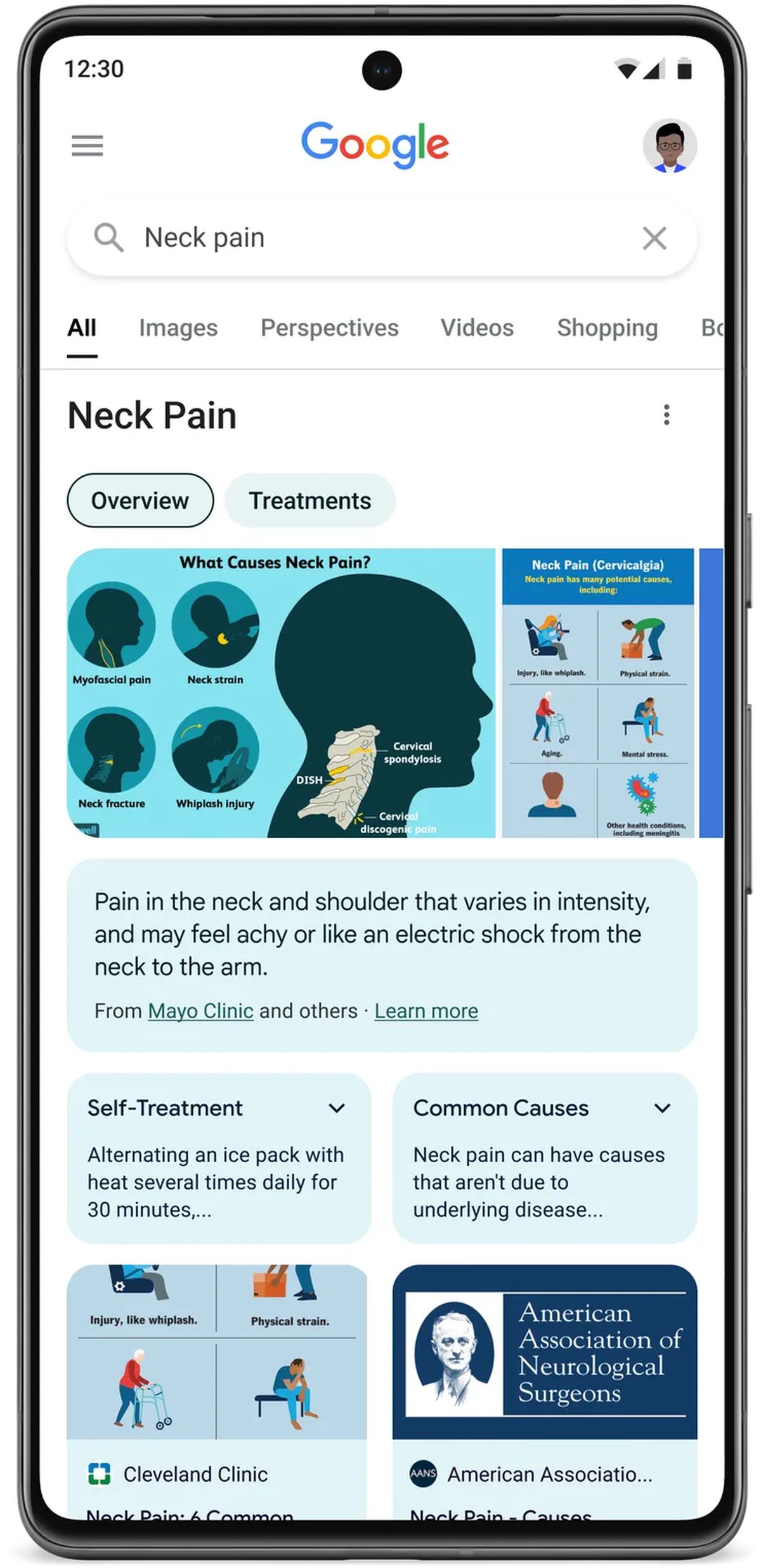- Google introduced new AI enhancements to improve search results for health conditions, including adding visual aids like diagrams from reputable online sources.
- The company revealed plans for a more visual and informative mobile search experience for health conditions and is utilizing YouTube to expand health education access, featuring translated and specialized content.
- Significant updates include an AI-powered image comparison tool for diagnosing skin conditions and a new Fitbit feature for Premium users, employing a Personal Health Large Language Model.
Google recently revealed advancements in AI that transform how users find information on health conditions, making searches more efficient.
How Google will utilize gen AI to improve healthcare
During its annual Google Health event titled The Check Up, emphasis was placed on how generative AI is reshaping the healthcare sector. The company presented its latest AI healthcare innovations, collaborations, and consumer-focused tools, including enhancements to its Search feature to provide a more visual experience.
Google Search, a tool that grants access to vast amounts of information, is frequently utilized by individuals seeking to understand health issues better. To enrich the search experience with more detailed and useful information, Google has incorporated visual aids like images and diagrams from reputable online sources into its search results.
For instance, a search query for a health condition on Google will now display diagrams that offer a clearer visualization and comprehension of the condition, along with summaries and insights into possible treatments.

An AI-driven feature for comparing images, introduced the previous year, complements this new search capability. This feature enables users to upload pictures of skin conditions, such as rashes, and find similar images online for comparison.
Google intends to extend these enriched visual search results for health conditions to mobile platforms, planning a global rollout of the update in the upcoming months.
Furthermore, Google is utilizing YouTube to broaden access to health education. For example, Mass General Brigham is expanding its use of YouTube’s Aloud video translation feature, previously employed for first-aid video translations from English to Spanish, to include videos on chronic conditions, thereby reaching a broader audience.
A new educational series employing animation, offered on the Stanford Center for Continuing Medical Education’s YouTube channel, is designed to help healthcare professionals identify and address implicit bias in their practice. This series will also be made available in Spanish at no cost.
Additionally, Google announced a significant enhancement to Fitbit, introducing a new Personal Health Large Language Model for Premium subscribers, marking a step forward in personalized health and wellness tracking.
Featured image credit: Kerem Gülen/DALL-E 3





